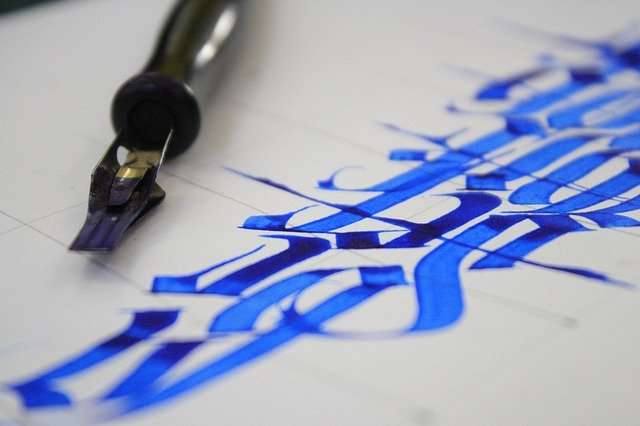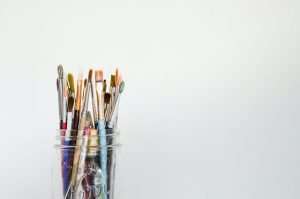The Rangoli designs mainly depict geometric figures and floral patterns. The geometric designs incorporate squares, triangles, circles and lines of dots which are drawn with a paste made of rice flour and water but flowers and animals are also incorporated in them. These are drawn using ground rice mixed with water or colored powders.
The main purpose behind drawing rangoli is to welcome the people at the entrance of the house with a beautiful design so that they get a good feeling when they enter your house. The other reason for drawing rangoli is to please Goddess Lakshmi. Hindus worship Goddess Lakshmi on Diwali night and it is believed that by drawing rangoli they please Goddess Lakshmi and she blesses them with prosperity, wealth and good luck.
Rangoli is considered as auspicious as far as decorating the house for Diwali is concerned. On this day people clean their houses thoroughly, decorate their houses with rangoli and light diyas in every corner of the house and pray for peace, prosperity, health and wealth for everyone.
Traditional rangoli patterns are beautiful and intricate, but their appeal goes beyond aesthetics. They have an underlying meaning, which is often religious or auspicious in nature. Some of the designs are hundreds of years old, and they still find ways to adapt to modern life — incorporating new symbols, changing their meaning slightly.
Tying a thread across nine points on a floor or ground creates a simple geometric pattern that is called a “rangoli.” Rangoli patterns are drawn by women on floors during festivals such as Diwali, the Hindu festival of lights, and Dusshera, the day of triumph of good over evil. It is also drawn during weddings and religious functions to welcome deities or guests.
Rangoli patterns vary from region to region depending on the local culture and religion. In the south Indian state of Kerala, for example, it is common for Christians to draw rangolis during Easter using colored powders instead of rice flour and colored sand. Some regions use limestone powder or even colored soil instead of flour to draw rangolis because it is more readily available there.
Rangoli patterns are traditionally drawn with three basic tools: chalk powder made from burnt rice husk (called “chalk”), water and a piece of string tied across nine points on
Rangoli is mostly created in Hindu households during the festival of colors called “Dussehra” or Vijaya Dashami. Rangolies are made of colored rice, flower petals, and other natural materials. It is believed to be the best way to ward off evil spirits and bring prosperity and good luck in the coming year.
The word rangoli is derived from two Kannada words “ranga” (color) and “kolu” (a traditional form of art). The art of rangoli making has been practiced for centuries as part of a ritual to welcome the goddess Durga on the eve of Vijaya Dashami.
Rangoli designs are often inspired by mythology and nature. However, they can also be abstracts, contemporary designs etc. They may also be created with other materials like dry flowers, sandalwood powder, colored water etc.
Rangoli or Kolam is a form of art from India, made using rice flour and colored powders. A rangoli design is usually created by an artist called rangoli artist or rangoliwallah on special occasions like festivals and ceremonies like marriages. The designs are usually symmetrical in nature and are drawn on the floor of houses, outside houses, roadsides, temples etc. Sometimes they are also drawn on walls as mural paintings.
Rangoli is also known as Kolam which means “line work”. They are more popular in South India. In North India they are called different names such as “chitra”, “chitrako” or just “kolams” which means drawings. The word Rangoli comes from two words “rang” (color) and “kolam” (drawings). In southern states of India, particularly in Tamil Nadu and Andhra Pradesh, these colourful designs are drawn mostly at the entrances of houses with rice flour paste in many different shapes for auspicious events like weddings or religious festivals. Typically every house has a small drawing to welcome the Gods during Dassera festival.
Rangoli, also known as Kolam, is a form of Indian folk art predominantly practiced in South India and Sri Lanka. It is made by drawing geometric patterns on the ground using rice powder or chalks. Traditionally, rangoli designs are drawn inside the houses as well as outside.
The application of rangoli is an ancient art that has evolved over the centuries. While it is difficult to ascertain its exact origin, it is widely believed that this art probably originated from the south-eastern parts of India, where rice was grown in abundance. This practice was later picked up by the north Indians and people from other states as well. The word Kolam is derived from two Tamil words: “Kol”, meaning “beauty”, and “Aal”, meaning “ground”. Thus, Kolam means beautiful ground.
Rangoli has many forms and styles, which are meant for different occasions and festivals, such as Diwali (Festival of Lights), Maha Shivaratri and Karthigai Deepam. A form of rangolis are also drawn during weddings and other festivities, often with rice flour paste (rice powder suspended in water) or colored sand grains.
Rangoli is one of the most popular forms of art in India
Rangoli is a type of art done with coloured powders in a typical Indian way. This is one of the most popular art forms among Indian women. Rangolis are drawn during festivals, on seasonal occasions and sometimes as decoration for special occasions like weddings.
Rangoli is drawn in front of the houses, temples, shops and monuments to depict scenes from mythology and also to depict daily life. The traditional form of rangoli was drawn by using colored rice powder which may be replaced by colored sand or dry pastel chalks these days.
Rangoli was originally made by women with rice powder in the early morning hours to welcome their male folks who used to return from work. Modern rangoli designs are rarely made with rice powder; very few women know how to draw rangoli with rice powder.
Rangoli or Kolam (Indian Hand Painting) is a traditional art practiced in the Indian states of Andhra Pradesh, Tamil Nadu, Karnataka and Kerala. It is also common in Mauritius, Réunion Island and Fiji Islands.
The designs are made by applying rice powder with the fingers on a flat surface such as wet mud, wet sand or dry soil. The patterns generated are also called rangoli.
The art is derived from the Sanskrit word “Rangavalli”, meaning “colorful arrangement”. It is also known as Tirobhavi in Maharashtra and Tambolitawala Art in Andhra Pradesh. Dasiattam, a form of rangoli, practised in Tamil Nadu was mentioned in Kamba Ramayanam as one of the fine arts pursued by ladies of the court of King Ravana.



